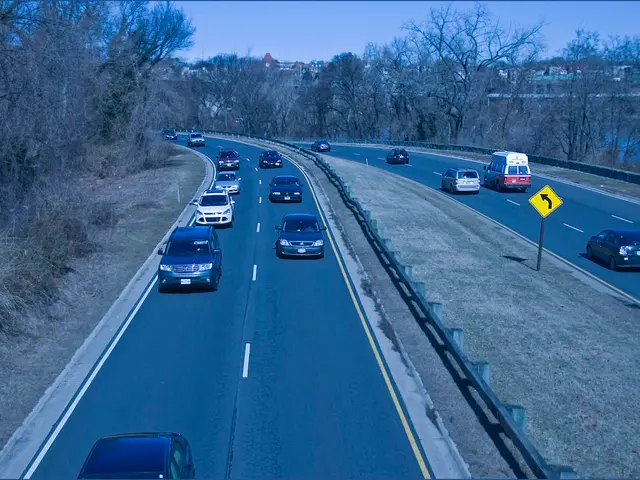Trams resume service at Brückenabriss: Essential information for Berlin commuters
After a sudden closure due to structural concerns, operations for Berlin's trams between Karlshorst and Oberschöneweide are expected to resume soon. The Bridge over the Wuhlheide, which had been mostly dismantled ahead of schedule, was causing safety concerns and had necessitated the suspension of tram and road traffic.
The Spannbeton bridge, opened in 1989, was quickly demolished, a process faster than initially planned. With approval from the Senate, BVG construction crews can now restore the track in the intersection area.
According to the Berliner Verkehrsbetriebe (BVG), it is optimistic that trams will soon be operating again on Treskowallee/Edisonstraße, an essential part of a heavily-used tram tangent in the east. There is a possibility that a shuttle service may begin as early as tomorrow.
Transport Senator Ute Bonde's (CDU) spokesperson, Petra Nelken, echoed these sentiments, indicating that the BVG could take control of this part of the construction site today. While test runs might occur on Ascension Day, and limited passenger service potentially begin on the same day, a single tram driver skewed expectations, predicting service might not resume until Friday or Saturday.
In a positive turn of events, the accelerated demolition of the crumbling bridge at Wuhlheide signifies a quicker-than-usual revamp of infrastructure in Germany. The demolition project in Eastern Berlin is evidence that progress in German infrastructure can occur swiftly if all parties aim for such outcomes.
This demolition began earlier than anticipated following discussions between the Senate and construction companies. After recognizing the imminent risk of the bridge tilting, a Europe-wide tendering procedure was waived, allowing Strabag to secure the contract on the evening of May 22. A day ahead of schedule, construction began on the closed intersection at Wuhlheide, with several onlookers observing the rapid progress.
The bridge, initially built by the state-owned Autobahnkombinat (VEB ABK), had been suffering from various ailments primarily due to an alkali-silica reaction, also known as "concrete cancer." Additionally, the joint construction was no longer recognized in its current form. Every single expansion joint had cracked, according to traffic administration head Lutz Adam, leading to moisture seepage and affecting a type of prestressing steel called Henningdorfer, known for its vulnerability to corrosion. With the increased risk of a potential collapse, the decision was made to carry out a swift demolition for public safety.
Detours and delays on roads and rails may bring challenges to commuters this summer, according to ODEG Chief Lars Gehrke. Moreover, expect the street section Treskowallee/Edisonstraße to reopen to car traffic in June, though dates for the reopening of the street section An der Wuhlheide/Rummelsburger Straße remain undetermined.
Before passengers can return to their usual routes, inspecting and rebuilding the covered tracks, overhead lines, and power supply are necessary. Once approved, BVG specialists will expeditiously complete the necessary work to restart tram lines M17, 21, 27, and 37. The construction teams, fire department, BVG, and other agencies involved deserve praise for their swift effort to reestablish safe transportation in the area.
In light of the swift demolition of the crumbling bridge at Wuhlheide, there could be potential opportunities for the sports industry to invest in the revitalized infrastructure of Eastern Berlin. With the transportation sector showing signs of rapid progress in overcoming obstacles, there may also be possibilities for financial institutions to consider backing projects in the transportation and sports industries in Germany.








